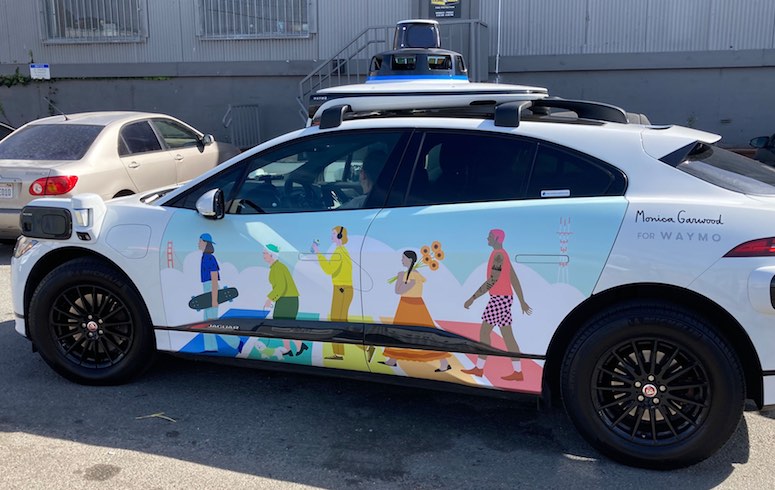|
Listen to this article  |
The hot-take artists wasted no time after the recent Argo AI shutdown. This was an unexpected move by Ford and Volkswagen, which were the two largest financial backers of the once-promising autonomous driving startup. But shortly after the news broke, many already signed the death certificate for all autonomous vehicles.
However, some of the industry’s leading players have incredible momentum at the moment. Cruise recently expanded its public robotaxi service in San Francisco, announced it’s bringing robotaxi services to two more cities in the coming months, started testing its Origin ridesharing autonomous vehicle in California and started making autonomous deliveries for Walmart in two Arizona locations.
While I was writing this, Waymo, which has been running a robotaxi service in a limited area of Arizona, expanded its service in downtown Phoenix to include pickups and drop-offs at Phoenix Sky Harbor International Airport. Waymo also recently announced it’s expanding to Los Angeles and continues to test its robotaxi service in San Francisco.
Mobileye went public after spinning out of Intel. And the autonomous vehicle market in China has several major players doing great work, too.
I’ve been fortunate enough to ride in several different robotaxis over the years, most recently with Waymo in San Francisco prior to RoboBusiness. It was a roughly 9-mile ride that took just under 30 minutes. Because I’m not a Waymo employee, there was a human safety driver behind the wheel.
The route we took had a myriad of obstacles, including multiple unprotected left turns, pedestrians crossing streets and sidewalks, bicyclists, narrow streets, double-parked Amazon delivery trucks and construction vehicles cutting us off. As you would hope, the trip was flawless and uneventful. Actually, it was quite boring. You can watch a video of my ride atop this page.

This Waymo robotaxi drove me around San Francisco. | Credit: Steve Crowe/The Robot Report
Cruise and Waymo have had well-documented hiccups with their robotaxi services. But anyone who calls what these companies are doing simply “flashy demos” is either being disingenuous or hasn’t experienced the technology first-hand.
I understand Waymo and Cruise have been in San Francisco for years, meticulously mapping and training their autonomous driving stack in geofenced areas of the city. But San Francisco is an incredibly challenging city to drive in. They should be able to take what they’ve learned in San Francisco and more quickly launch similar robotaxi services elsewhere in less chaotic areas.
This is not to say the industry doesn’t have major challenges. Questions about reliability, revenue and scalability abound. But declaring the entire industry dead is foolish. New technologies rarely develop the way many expect. And the earliest players often don’t win out.
During the five-plus years that Ford owned the majority of Argo AI, it spent nearly $2.7 billion on R&D. During that same time, Ford also generated about $850 billion in sales, $43 billion in operating profit and spent about $39 billion on both capital outlays and R&D.
Ford said the plan is to shift its focus away from funding Argo AI’s development of Level 4 autonomous driving technology and towards creating its own Level 2 and Level 3 driving systems. “We’re optimistic about a future for L4 advanced driver assist systems, but profitable, fully autonomous vehicles at scale are a long way off, and we won’t necessarily have to create that technology ourselves,” Farley said.
Certainly, the consolidation will continue. But other companies will stay the course. Waymo, for example, could have multiple revenue streams thanks to its robotaxis and autonomous trucking business. And despite less confidence from venture capitalists, new players will come to market with new strategies and technologies.
Chris Urmson, co-founder and CEO of Aurora, a self-driving company that has partnerships with Toyota and Uber, shared his thoughts about Argo AI shutting down. He said the industry has never been closer to delivering on the promise of self-driving vehicles. And he shared a couple of reasons why the technology is needed.
“Over 40,000 people died in car crashes last year, up 10% from the previous year. Trucking is an over $700 billion business, moving over 72% of the nation’s freight by weight, but we just don’t have enough drivers to move it all. It’s also dangerous—there are almost half a million accidents involving trucks a year,” Urmson said.
Urmson, of course, is biased since he has a major stake in this game. So, of course, he’s going to say positive things after a negative situation. And there are rumors that Aurora is running out of money and is looking to be acquired. But I think he’s right.
Just because Argo AI failed doesn’t mean every other autonomous vehicle company will. Ford might have simply had a change of heart with its strategy, but it’s also OK to say Argo AI fell behind the competition in recent years. Did the team get the technology as far as it could? We’ll learn more in the coming months.
Albeit slower than originally expected, autonomous vehicles are making tremendous strides. Argo AI’s shutdown doesn’t signal the end of the industry. It just reiterates that this technology is difficult to develop. And the path to fully autonomous vehicles is being re-routed yet again.
Credit: Source link


Comments are closed.